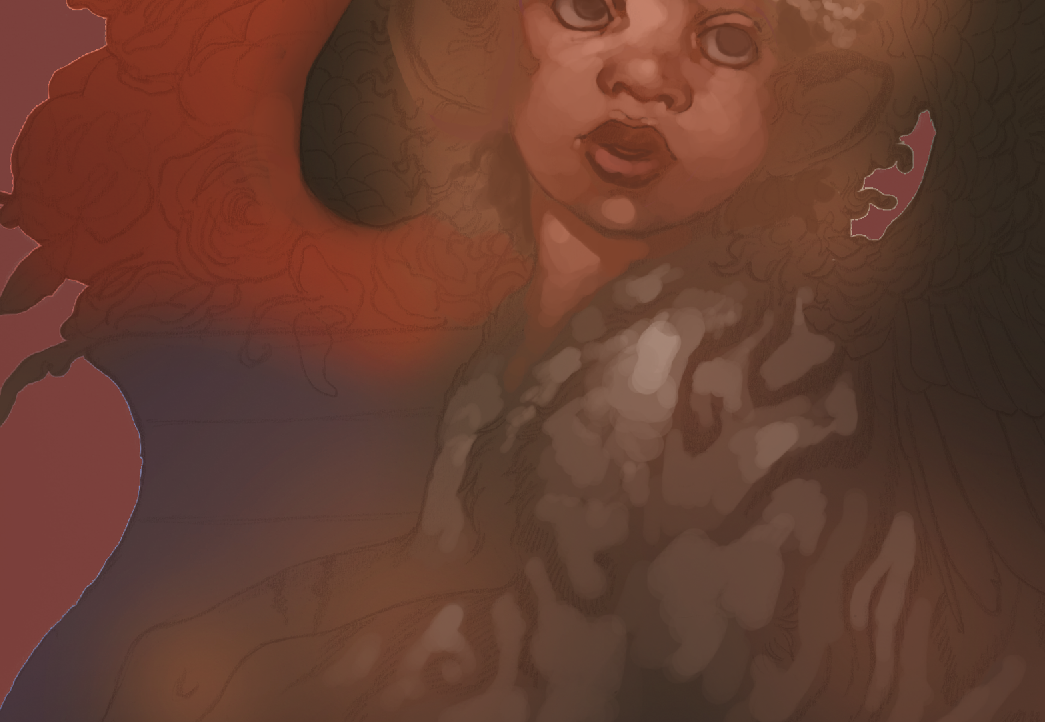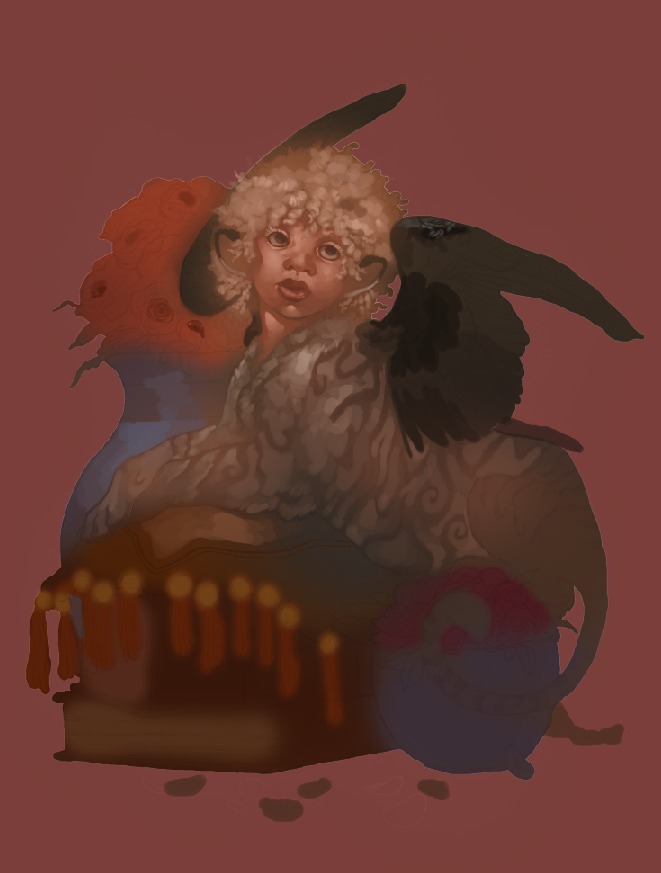|
This is a piece of character art I did back in 2017, and one I'm still deeply proud of. It's a direction/technique I want to pick up again moving forward. I also figure it's time to talk about traditional and digital art, a juxtaposition that tends to get a lot of ire from gatekeeper blowhards. In my previous posts I talked about how I like to combine a little traditional art with digital, even though working 100% digital is often faster. There's a certain texture to pencil sketches that translates very well to digital painting. I took a wonderful general painting class back in high school -- alongside mentoring under an acrylic painting professor from a local university -- that helped set a strong foundation for my work today. Contrary to what some say (yes, sometimes to my face), traditional art is not better -- or more real -- than digital art. There's a pervasive -- and self-serving -- myth that a thing being harder automatically makes it better. Now, you won't get me saying traditional art doesn't have a steeper learning curve than digital. That is absolutely true. There are simply more steps involved. You have to prep the canvas (or wood or cardboard or-), create or transfer the sketch, mix your colors, protect your colors throughout several sessions, clean your brushes, preserve the final work, frame, package...yes. That is absolutely more work. But more work doesn't automatically mean better work. I've seen traditional art that's hardly moved me. I've seen digital art that's captured my imagination. This purity myth is steeped in gatekeeping attitudes that equate more difficulties with success...usually by those who don't face quite as many of those difficulties (such as having studio space or money for supplies) in the first place. I will not, however, create more myths around digital art. Digital art is easier than traditional. It's still not easy. If you're not familiar with layering, masking, color theory, light and shadow, design, mixing up your references...? Going digital is not suddenly going to fix that, no more than buying a fancy set of Copic markers and Bristol board will transform you into an overnight art master. In that regard...these two art forms are honestly not all that different. Digital art today is a brilliant tool to create art while saving space and money. It's painting without the mess. It's less costly. It's more flexible, especially if you're like me and constantly come up with new ideas on the fly. Already having a traditional art foundation just gives you a head start, as it makes the transition far smoother and gives your work a look that's not easily replicated. Doing a traditional sketch filled in with digital colors gives me the best of both worlds: the tight, grainy detail of pencil with the rich, sumptuous colors of a few Photoshop sessions. I've had this character since I was a teenager. I love him to bits. My traditional art background includes acrylic, gouache, watercolor, colored pencils and China markers. I've never had the studio space to get down and dirty with oils, but I really want to in the future. ...And before you ask, yes. Acrylic and gouache have both been considered 'lowbrow' paints for decades due to their commercial associations, while oil has remained the highbrow standard in fine art circles. It's no coincidence that oil paints take a lot more money and space than acrylic or gouache. They also have a higher health risk. See what I mean with difficulty being equated with superiority? I use traditional painting techniques in Photoshop throughout the entire process, including working dark-to-light and adding subtle gradients to make my brush strokes look rich. I'm also a huge fan of overlay layers and am constantly 'glazing' with the soft round to balance out my hard-edged brushes. You won't see me using more than five to ten layers at any given time, though I will regularly create new layers, add an effect, then flatten. It helps Photoshop run smoothly while keeping me organized. You can see which areas are more defined and which are fuzzier, a balance I work with as I go to keep the eye traveling naturally. Contrast is an essential part of any style or technique, as it gives the eye stopping and starting points. It's like a guitar solo in a rock song or the blank space in a living room. Balancing out hard v.s. soft, textured v.s. smooth, bright v.s. dark is a give and take that's become second nature. Even then? Years of experience doesn't stop me from flubbing my composition or struggling through a pose. I'm still amazed I knocked this sketch out in one go without a rough draft. Painter tip: you don't need to render every little part of the painting. Even if you go for a more realistic style. Notice how the final piece has areas with little detail and sometimes no detail, like some of the tassles and the edge of the (viewer's) left wing. This does the dual work of saving you unnecessary work and giving your painting more balance. A win-win. I've touched on this in past posts, but I take a lot of inspiration from the Romantic and Baroque periods. Not just in terms of subject matter, but in technique. Oily. Lavish. Rosy. Evocative. Rich. Bold. Powerful. Luscious. These are all adjectives I strive for. Be proud of your old work. Don't feel shame in taking a few steps backwards and revisiting a technique or subject you like. Most of all, don't fall for the myth that traditional or digital art is superior to the other. When in doubt? Do both. For those interested, I also have a few leftover prints of this very piece that I plan on selling soon. I have more WIPs and studies coming up (as well as more art rants), so stay tuned!
0 Comments
Your comment will be posted after it is approved.
Leave a Reply. |
AuthorHere I post WIPs, sketches, speedpaints, thumbnails and anything else thrown into the veritable stew of artistic process. Archives
January 2021
Categories
All
|
ServicesBook Covers
Illustration Character Art Portraits Packaging Art Concept Art |
AboutCommercial illustrator and designer currently available for short-term and long-term freelance work.
|
© COPYRIGHT 2015. ALL RIGHTS RESERVED.
|





 RSS Feed
RSS Feed